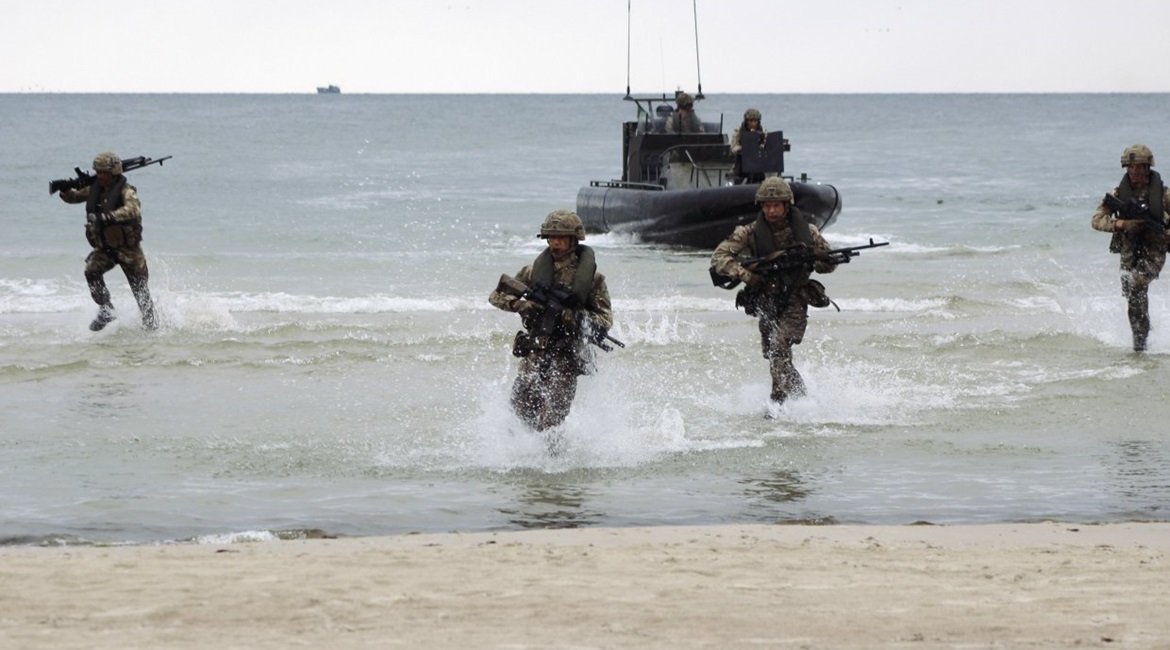
US and NATO forces have been demonstrating a new amphibious command-and-control (C2) construct at the ‘BALTOPS 2019’ military exercise which is being held from 9–21 June. This construct is being developed to support larger, more complex amphibious operations, such as those enabled at ‘BALTOPS 2019’ by greater amphibious participation this year.

Marines disembark from raiding craft during an amphibious demonstration at Palanga Beach, Lithuania held as part of ‘BALTOPS 2019’. (Lee Willett)
Being held in the Baltic Sea, amongst the 50-plus ships and submarines present at 'BALTOPS 2019' are five amphibious platforms – the US Navy’s Whidbey Island-class landing ship dock vessel USS Fort McHenry , UK Royal Navy landing platform dock amphibious ship HMS Albion , UK Royal Fleet Auxiliary Bay-class LSD Auxiliary platform RFA Lyme Bay , Spanish Navy landing helicopter dock ship ESPS Juan Carlos I , and the Polish Navy’s Project 767 Lublin-class landing ship tank vessel ORP Gniezno . These platforms are embarking US Marine Corps (USMC), Royal Marines, Spanish marines, and Romanian naval infantry forces. Headquarters (HQ) command staffs for the USMC’s 2nd Marine Expeditionary Brigade (MEB), US Expeditionary Strike Group 2 (ESG2), and the UK’s Commander Amphibious Task Group (COM ATG) and 3 Commando Brigade are also present.
‘BALTOPS 2019’ is providing the first opportunity to test the new construct, which has been developed by the NATO Amphibious Leaders Expeditionary Symposium (NALES). The construct places an intermediate level of command between a NATO or coalition Maritime Component Commander and multiple Amphibious Task Groups (ATGs).
“This is designed to enable a more coherent warfighting and readiness structure, but also to ensure exercises like ‘BALTOPS 2019’ are utilised to pursue common amphibious objectives,” Brigadier Matt Jackson, Commander 3 Commando Brigade, told Jane’s
Looking to read the full article?
Gain unlimited access to Janes news and more...






